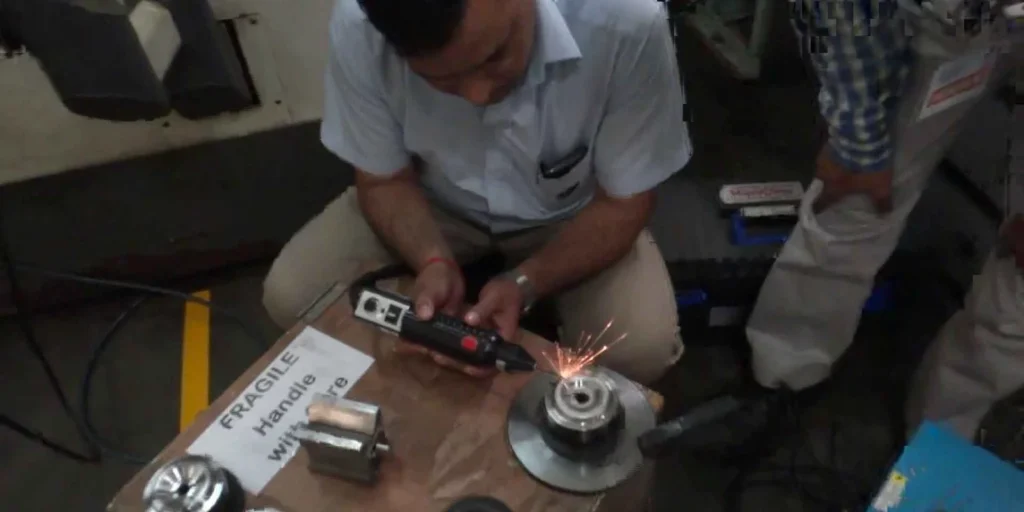Increasing Forging Die, Tool Life
and Reducing Rejections
Using Protective Coatings
- Home
- Increasing Forging Die, Tool Life and Reducing Rejections Using Protective Coatings
Increasing Forging Die, Tool Life and Reducing Rejections Using Protective Coatings

S. P. Shenoy
CEO of Steel Plant Specialities, India.
M.Tech. (Met. Engg.)
info@steelplantspecialities.com
Abstract & Introduction
Protective Coatings continue to play a major role in increasing productivity and reducing costs in metal forming and treatment processes like hot forging and heat treatment. This technical paper presents details and successful case studies of three such protective coatings:
- Die, mould and tool wear are major reasons for production downtime and increased costs in most industries. Carbide coating to protect only the wear-prone areas of dies using Japanese cold-welding technology is a practical and economical technique that has proven to increase die, mould and tool life. This technique, though similar to welding, does not pose difficulties of smoke emission, pre and post-weld heat treatment and requirement of skilled labour. It can also be carried out on the die or tool without unloading it from the forging press or such equipment, without need of a weld shop.
- When forging die is in use, it is mandatory to keep it well lubricated and the die temperature maintained as per required application. Die protective coating cum lubricant is used to achieve these objectives. Graphite-in-water formulations are popularly used as die lubricants until recently. Though effective as a lubricant, graphite is highly polluting and dirties the surroundings. Effective white lubricants using environment friendly materials are now developed that have proven to eliminate graphite and associated pollution. Substantial increase in die life and reduced pollution is possible by the use of white lubricant cum protective die coating.
- Oxidation and resultant scaling at high temperatures is caused during heating of billets, ingots for forging and during heat treatment of formed components. Scaling leads to enormous losses by way of rejections of produce, reduced yield and increase in non-value adding operations like shot-blasting, grinding, pickling, etc. These parameters are becoming increasingly sensitive in open and closed die forging, especially of expensive grades of steel like SS, Nickel-bearing steels and aerospace forgings. Anti-scale protective coatings can be used to prevent or substantially reduce high-temperature oxidation and scaling.
These techniques can be easily adopted by all metal forming units, big and small.
Subject 1: Increasing forging die life by the use of Japanese cold-welding technique.
Problem: Die, mould and tool wear are major reasons for production downtime and increased costs in most industries. Apart from using the most appropriate die steel, a few effective treatments can be administered to dies to increase their service life.
Observation: Most of the forging dies wear out only in certain areas. The complete die impression does not wear out at once. Only sensitive portions of the die, like edges, profiles that take majority forging load, etc. wear out much faster than the rest of the die profile. Some examples are shown below:




Technology: Carbide coating using Japanese cold-welding technique involves coating of tungsten carbide on selective wear-prone areas of dies/ moulds / tools through the special electronic Japanese Cold Welding Technique.
Cold welding is carried out as a ‘Preventive Maintenance’ technique on new dies. It is a surface hardening technique, similar to nitriding, but is administered manually using the cold-welding equipment. Hardness of tungsten carbide layer deposited by cold-welding on dies can surpass nitriding to reach hardness of more than 70 HRC.
Benefits of Japanese Cold Welding Technology:
- Skilled welders not required. Can be carried out by anyone
- Open space / ducting not required. No fumes are generated during cold welding
- Time saving process as dies need not be removed from forging equipment
- Pre and post welding heat treatment not necessary. No stresses are generated during cold welding as it is a cold process.
Additional benefits of Japanese Cold Welding Technology:
- Nitriding of dies not required. Hardness of tungsten carbide coating is more than 70 HRC, which is higher than hardness obtained by nitriding process (62-64 HRC).
- Increased die life due to high wear resistance.
- Substantially reduced maintenance downtime of dies and tools.
- Ability to coat selective areas of dies that are prone to wear. Process does not require the complete die to be treated/ protected.
COMPACT COLD WELDING EQUIPMENT AND APPLICATORS



CAN BE USED BY ANYONE, ANYWHERE



Carbide coating is seen as silvery, coarse coating on wear-prone areas of dies:

Substantial increase in die life after cold-welding:


